926 scholarly books by The Ohio State University Press and 7
start with Q
926 scholarly books by The Ohio State University Press and 7
926 scholarly books by The Ohio State University Press
7 start with Q start with Q
7 start with Q start with Q
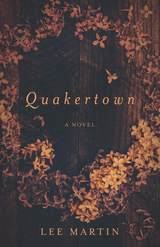
Quakertown
Lee Martin
The Ohio State University Press, 2017
In Quakertown, Lee Martin travels back in time to 1920s Texas to tell the story of a flourishing black community that was segregated from its white brethren—and of the remarkable gardener who was asked to do the unimaginable.
Based on the true story of a shameful episode in north Texas history, Quakertown draws on the rich texture of the South—the Pecan Creek running along the edges of Quakertown, the remarkable and rare white lilac, and the rising tensions marking each nod and greeting. With strength and a deep wisdom of heart, Martin carves out the delicate story of two families—one white and one black—and the child whose birth brought a gift of forgiveness.
Suffused with Martin’s deep compassion and profound humanity, Quakertown is an unforgettable novel from a master of American prose.
Based on the true story of a shameful episode in north Texas history, Quakertown draws on the rich texture of the South—the Pecan Creek running along the edges of Quakertown, the remarkable and rare white lilac, and the rising tensions marking each nod and greeting. With strength and a deep wisdom of heart, Martin carves out the delicate story of two families—one white and one black—and the child whose birth brought a gift of forgiveness.
Suffused with Martin’s deep compassion and profound humanity, Quakertown is an unforgettable novel from a master of American prose.
[more]
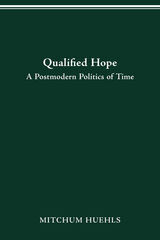
Qualified Hope
A Postmodern Politics of Time
Mitchum Huehls
The Ohio State University Press, 2009
What is the political value of time, and where does that value reside? Should politics place its hope in future possibility, or does that simply defer action in the present? Can the present ground a vision of change, or is it too circumscribed by the status quo?
In Qualified Hope: A Postmodern Politics of Time, Mitchum Huehls contends that conventional treatments of time’s relationship to politics are limited by a focus on real-world experiences of time. By contrast, the innovative literary forms developed by authors in direct response to political events such as the Cold War, globalization, the emergence of identity politics, and 9/11 offer readers uniquely literary experiences of time. And it is in these literary experiences of time that Qualified Hope identifies more complicated—and thus more productive—ways to think about the time-politics relationship.
Qualified Hope challenges the conventional characterization of postmodernism as a period in which authors reject time in favor of space as the primary category for organizing experience and knowledge. And by identifying a common commitment to time at the heart of postmodern literature, Huehls suggests that the period-defining divide between multiculturalism and theory is not as stark as previously thought.
[more]
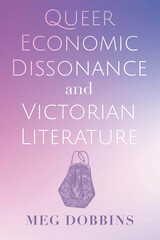
Queer Economic Dissonance and Victorian Literature
Meg Dobbins
The Ohio State University Press, 2022
In nineteenth-century Britain, the word queer was associated not only with same-sex desire but also with irregular forms of financial association and trust. Queer Economic Dissonance and Victorian Literature centers this forgotten facet of queer by recovering an alternative economic narrative of the Victorian period: one of economic excess, waste, debt, and downward mobility. Drawing on insights from intersectional queer theory and economic literary criticism, as well as astute readings of works by Charles Dickens, Charlotte Brontë, Mary Seacole, George Eliot, and Oscar Wilde, Meg Dobbins argues that eccentric economic figures like Black entrepreneurs, childless widows, and working-class benefactors represent sites of queerness––forms of economic desire, identity, strategy, or relation that become sites of friction within the developing social and institutional norms of nineteenth-century capitalism. Dobbins argues that Victorian authors document the everyday economic struggles of those cast aside, left behind, and fundamentally transfigured by modern capitalism. Rather than rejecting capitalist ideology, these authors queer socioeconomic norms, shedding light on the provocative ways Victorians made capitalism livable, and even pleasurable. In this way, Queer Economic Dissonance rearticulates the link between erotic and economic forms of dissonance in capitalist society.
[more]
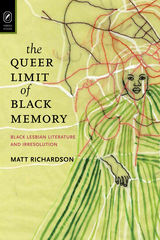
The Queer Limit of Black Memory
Black Lesbian Literature and Irresolution
Matt Richardson
The Ohio State University Press, 2013
The Queer Limit of Black Memory: Black Lesbian Literature and Irresolution identifies a new archive of Black women’s literature that has heretofore been on the margins of literary scholarship and African diaspora cultural criticism. It argues that Black lesbian texts celebrate both the strategies of resistance used by queer Black subjects and the spaces for grieving the loss of queer Black subjects that dominant histories of the African diasporas often forget. Matt Richardson has gathered an understudied archive of texts by LaShonda Barnett, S. Diane Adamz-Bogus, Dionne Brand, Sharon Bridgforth, Laurinda D. Brown, Jewelle Gomez, Jackie Kay, and Cherry Muhanji in order to relocate the queerness of Black diasporic vernacular traditions, including drag or gender performance, blues, jazz, and West African spiritual and religious practices.
Richardson argues that the vernacular includes queer epistemologies, or methods for accessing and exploring the realities of Black queer experience that other alternative archives and spaces of commemoration do not explore. The Queer Limit of Black Memory brings together several theorists whose work is vital within Black studies—Fred Moten, Saidiya Hartman, Hortense Spillers, Frantz Fanon, and Orlando Patterson—in service of queer readings of Black subjectivity.
[more]
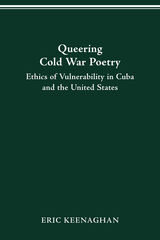
Queering Cold War Poetry
Ethics of Vulnerability in Cuba and the United States
Eric Keenaghan
The Ohio State University Press, 2009
Many feel that individualism, and the security it demands, define democracy and freedom. This belief is characteristic of the attitude that thinkers from John Dewey to Michel Foucault have criticized as "liberalist." In actuality, we share intimate associations with one another through contacts established by our bodies and even by language.
In Queering Cold War Poetry, Eric Keenaghan offers queer theory, queer studies, and literary theory a new political and conceptual language for reevaluating past and present high valuations of individualism and security. He examines four Cold War poets from Cuba and the United States—Wallace Stevens, José Lezama Lima, Robert Duncan, and Severo Sarduy. These writers, who lived in an era when homosexuals were regarded as outsiders or even security threats, offer critiques of nationalism and liberalism. In their struggles against state and cultural mandates that foreclosed positive estimations of vulnerability, Stevens, Lezama, Duncan, and Sarduy radically revised ethics and identity in their day. Their work exemplifies how much modernist poetry disseminates experiences of differences that challenge prevailing attitudes about individuals' relationships to one another and to their nations. Through studies of Cuban and U.S. lyric and poetics, Queering Cold War Poetry clears the way for imagining what it means to belong to a passionate and compassionate citizenry which celebrates vulnerability, searches for difference in itself and each of its constituent individuals, and identifies less with a nation than with a global community.
[more]
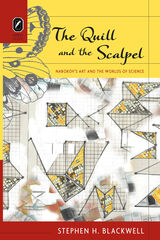
The Quill and the Scalpel
Nabokov's Art and the Worlds of Science
Stephen H. Blackwell
The Ohio State University Press, 2009
Most famous as a literary artist, Vladimir Nabokov was also a professional biologist and a lifelong student of science. By exploring the refractions of physics, psychology, and biology within his art and thought, The Quill and the Scalpel: Nabokov’s Art and the Worlds of Science,by Stephen H. Blackwell, demonstrates how aesthetic sensibilities contributed to Nabokov’s scientific work, and how his scientific passions shape, inform, and permeate his fictions.
Nabokov’s attention to holistic study and inductive empirical work gradually reinforced his underlying suspicion of mechanistic explanations of nature. He perceived chilling parallels between the overconfidence of scientific progress and the dogmatic certainty of the Soviet regime. His scientific work and his artistic transfigurations of science underscore the limitations of human knowledge as a defining element of life. In provocative novels like Lolita,Pale Fire,The Gift,Ada, and others, Nabokov advances a surprisingly modest epistemology, urging skepticism toward all portrayals of nature, artistic and scientific. Simultaneously, he challenges his readers to recognize in the arts a vital branch of human discovery, one that both complements and informs traditional scientific research.
[more]
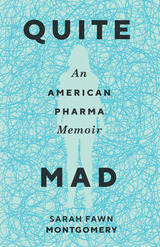
Quite Mad
An American Pharma Memoir
Sarah Fawn Montgomery
The Ohio State University Press, 2018
Diagnosed with severe anxiety, PTSD, and OCD in her early twenties, Sarah Fawn Montgomery spent the next ten years seeking treatment and the language with which to describe the indescribable consequences of her mental illness. Faced with disbelief, intolerable side effects, and unexpected changes in her mental health as a result of treatment, Montgomery turned to American history and her own personal history—including her turbulent childhood and the violence she faced as a young woman—to make sense of the experience.
Blending memoir with literary journalism, Montgomery’s Quite Mad: An American Pharma Memoir examines America’s history of mental illness treatment—lobotomies to sterilization, the rest cure to Prozac—to challenge contemporary narratives about mental health. Questioning what it means to be a woman with highly stigmatized disorders, Montgomery also asks why mental illness continues to escalate in the United States despite so many “cures.” Investigating the construction of mental illness as a “female” malady, Montgomery exposes the ways current attitudes towards women and their bodies influence madness as well as the ways madness has transformed to a chronic Illness in our cultural imagination. Montgomery’s Quite Mad is one woman’s story, but it offers a beacon of hope and truth for the millions of individuals living with mental illness and issues a warning about the danger of diagnosis and the complex definition of sanity.
Blending memoir with literary journalism, Montgomery’s Quite Mad: An American Pharma Memoir examines America’s history of mental illness treatment—lobotomies to sterilization, the rest cure to Prozac—to challenge contemporary narratives about mental health. Questioning what it means to be a woman with highly stigmatized disorders, Montgomery also asks why mental illness continues to escalate in the United States despite so many “cures.” Investigating the construction of mental illness as a “female” malady, Montgomery exposes the ways current attitudes towards women and their bodies influence madness as well as the ways madness has transformed to a chronic Illness in our cultural imagination. Montgomery’s Quite Mad is one woman’s story, but it offers a beacon of hope and truth for the millions of individuals living with mental illness and issues a warning about the danger of diagnosis and the complex definition of sanity.
[more]
READERS
Browse our collection.
PUBLISHERS
See BiblioVault's publisher services.
STUDENT SERVICES
Files for college accessibility offices.
UChicago Accessibility Resources
home | accessibility | search | about | contact us
BiblioVault ® 2001 - 2024
The University of Chicago Press









